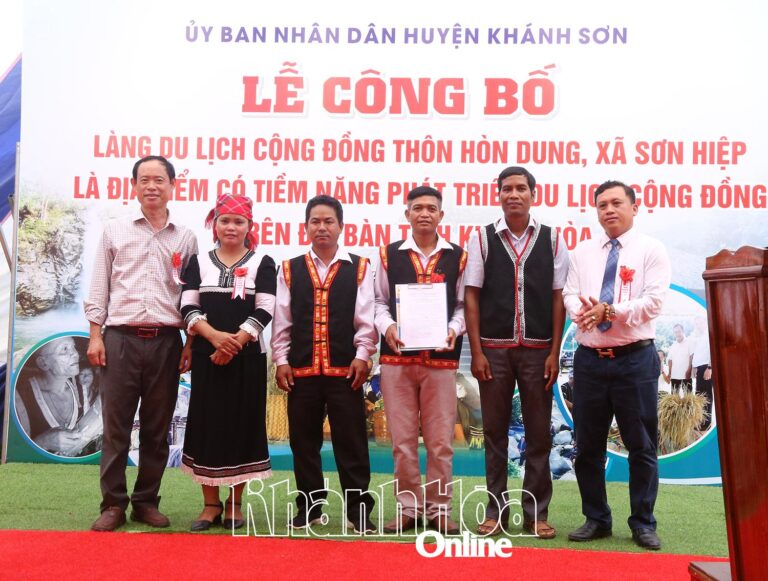In 2022, Long Bien Bridge turns 120 years old. Overcoming the test of time, the past is clearly visible on each span of the bridge and it has become an invaluable part of Hanoi's history.
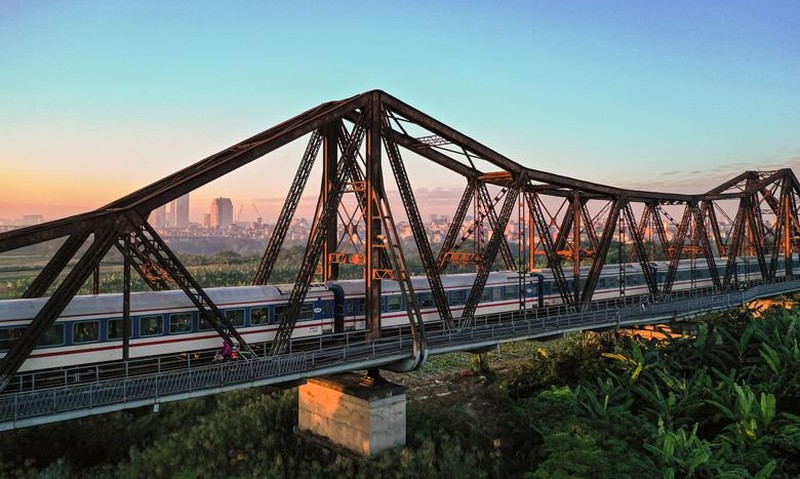
Long Bien Bridge always holds a special place in the hearts of Hanoians
Although many modern and monumental bridges have been built across the Red River such as Thang Long, Thanh Tri, Vinh Tuy Bridges, Long Bien Bridge always holds a special place in the hearts of Hanoians.
Long Bien Bridge was formerly known as Paul Doumer Bridge - the name of the French Governor-General who proposed the construction of this bridge. But the old folk often call this bridge the Bo De bridge because the bridge spans the Bo De village; or also known as Gia Lam bridge because it is north to Gia Lam district. Long Bien Bridge was a new name given after the August Revolution in 1945.
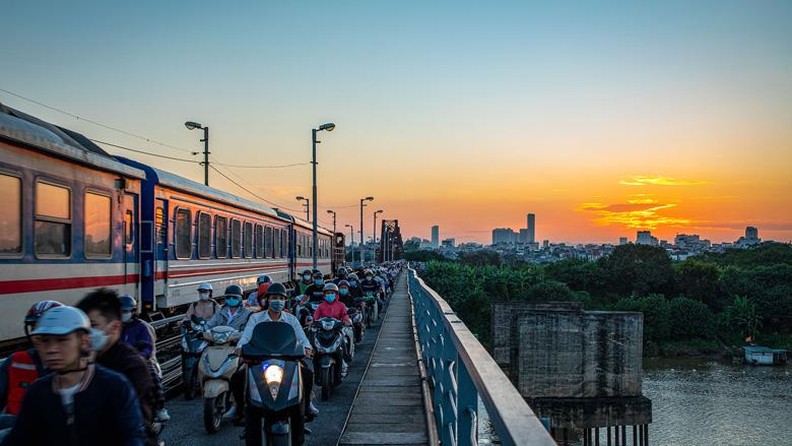
A train crosses the bridge in Hanoi during rush hour.
It is a steel bridge and construction started in September 1898, designed and constructed by the French firm Daydé-Pillié. The bridge was inaugurated in February 1902. The bridge has a length of 1,862m, including 19 steel beams.
There is a single track for trains in the middle and on both sides one for motor vehicles and pedestrians. In addition to the traffic value, Long Bien Bridge is also historical evidence, a century-old bridge that was considered one of the largest steel bridges in the world at the time.
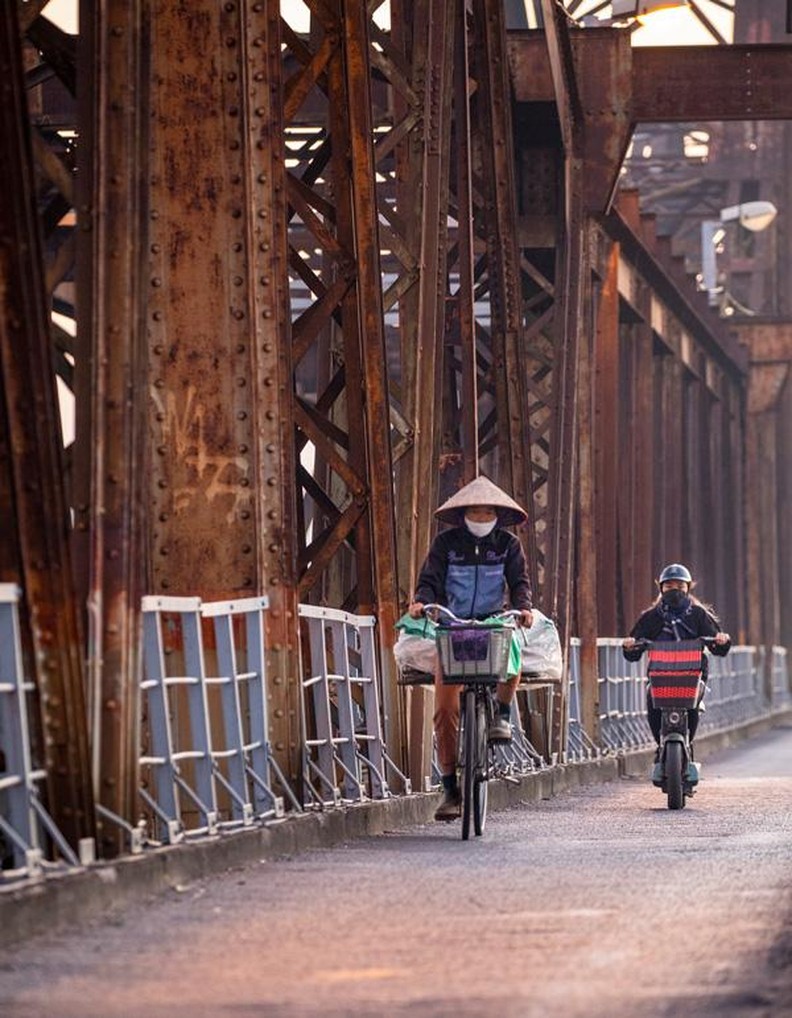
A rural woman crosses the bridge at dawn to enter the Old Quater to sell vegetables.
Upon building this bridge, the French colonialists completed the most important railway in Indochina at that time, the railway connecting Hai Phong estuary with Yunnan (China); while at the same time connecting Hanoi with Dong Dang (Lang Son). Initially, the bridge had only a railway. In 1922 - 1923, the bridge was expanded to allow cars go along with the railway.
During the war, the bridge was damaged 14 times by American bombs, 1,500 metres of the bridge was affected, knocking down nine spans and severely damaging four pillars.
After the Paris Agreement, after 41 days and nights of repair, on March 4, 1973, the first train crossed the Red River again via the iconic bridge. The bridge has basically remained unchanged in structure, except for the parts destroyed in the American war of destruction.
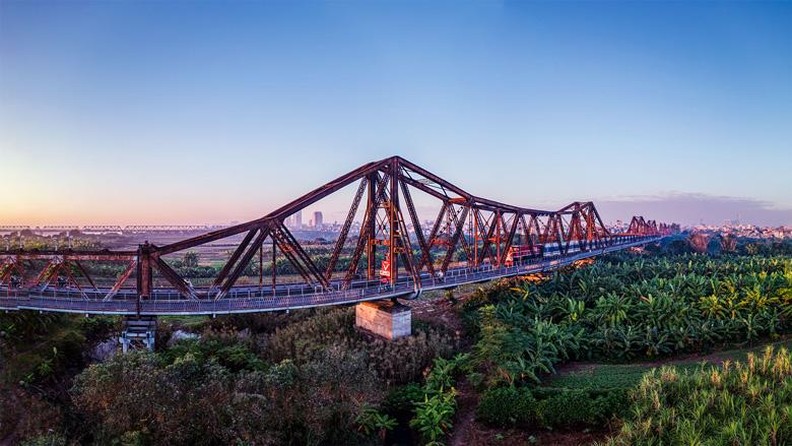
The bridge has a length of 1,862m. There is a train track in the middle, and on both sides, a track for motor vehicles and pedestrians.
This was also the first steel bridge in Vietnam. According to historical documents, its construction was due to the effort of many Vietnamese workers under the guidance of French experts.
The bridge uses tonnes of lime transported from Thua Thien - Hue to Hanoi, along with 30,000 cubic metres of stone and ironwood from Thanh Hoa and tonnes of cement from Hai Phong. Vietnamese workers had to dive deep into the river to build the bridge pier, about 30 metres below the water surface.
Long Bien Bridge bears a strong national identity despite being a modern architectural heritage at that time due to its shape like a dragon flying over the Red River, closely associated with the cultural symbol of Hanoi.
Long Bien Bridge is still considered one of the most beautiful bridges in Hanoi thanks to its unique nostalgic appearance. Having experienced the many ups and downs of history and time, the bridge is now seriously degraded.
The Hanoi administration is banning cars and tricycles from crossing this bridge, but every day from the time the sun starts to shine until late at night, the bridge still shuttles people back and forth as it has been for more than a century.
Nguyen Nghia - Translated by NDO



